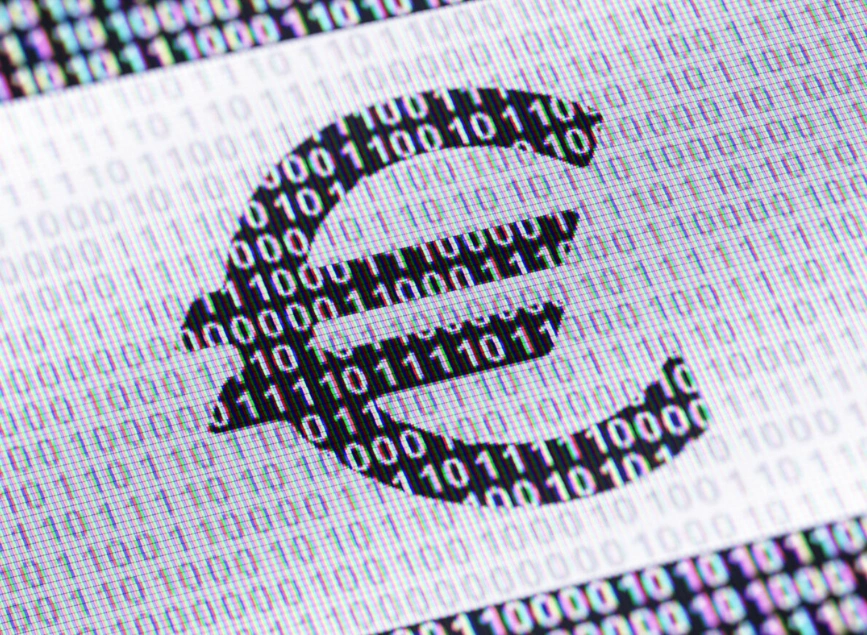
The European Central Bank’s Blockchain Leap: Digital Euro
The European Central Bank (ECB) is taking a decisive step toward the future of finance by developing a blockchain-based payment system. This initiative aims to enable financial institutions to settle transactions using central bank money, potentially setting the stage for a wholesale central bank digital currency (CBDC).
As the global race for digital currency innovation intensifies, Europe is making its move to stay competitive with China, the U.S., and Switzerland. But what makes this project so significant, and how might it reshape financial markets in the coming years?
The ECB’s Blockchain Payment System: What’s Coming?
The The European Central Bank’s plan involves two critical phases, each designed to build upon the other and transform how financial transactions are settled across Europe’s financial infrastructure.
Phase One: Building the Blockchain Backbone
The first phase focuses on developing a robust blockchain platform that will connect directly to the existing Target settlement system. This integration is expected to streamline transaction processing, significantly improving speed and security.
Read More: U.S. New Guidelines for Supporting Digital Assets
Phase Two: Expanding for Long-Term Solutions
In the second phase, the project will broaden its scope by introducing a comprehensive, long-term solution that incorporates foreign exchange (Forex) operations.
According to Piero Cipollone, a member of the The European Central Bank’s Executive Board:
“This is an important step in enhancing the efficiency of Europe’s financial market through innovation.”
While an official timeline has not yet been announced, the ECB intends to launch the first phase as soon as possible.
Why This Project Matters
This initiative goes beyond technological innovation—it represents a strategic effort to future-proof Europe’s financial system and maintain its competitive edge on the global stage.
Boosting Financial Efficiency
The use of blockchain technology promises to enhance transaction speed, security, and transparency, cutting down delays and operational costs.
Staying Competitive in the Global CBDC Race
This project ensures the ECB remains competitive with other major economies, particularly China and the United States, which are already advancing their own digital currency initiatives.
Shaping the Digital Asset Market
A wholesale CBDC could influence the broader cryptocurrency market, potentially challenging the dominance of stablecoins and other privately issued digital assets.
Read More: Blockchain in US Government: Transparency and Efficiency
Economic and Geopolitical Implications
The ECB’s push for a digital euro reflects a broader strategy that extends beyond financial efficiency—it’s also about reinforcing Europe’s geopolitical position.
Why Is the ECB Pursuing a CBDC?
- Improving financial infrastructure by addressing the speed and cost limitations of current systems such as TARGET2
- Reducing dependence on the U.S. dollar by offering a viable alternative for international trade
- Countering the influence of private cryptocurrencies like stablecoins, which could undermine central bank authority
- Competing with global rivals, particularly China’s digital yuan and the potential digital dollar from the United States
How Could This Affect Financial Markets?
- A digital euro could increase global demand for the currency, strengthening its position in international markets
- The rise of a CBDC could shift dynamics within the crypto market, challenging private cryptocurrencies and stablecoins
- Blockchain technology offers heightened security by reducing fraud, counterfeiting, and other transactional risks
- Europe will be better positioned to compete with Switzerland, which is advancing its own wholesale CBDC project
CBDC Development: How Europe Compares Globally
The ECB’s move aligns with a global trend of central banks exploring digital currencies. Here’s how Europe’s efforts compare to those of other major economies:
| Country | CBDC Type | Current Status |
|---|---|---|
| China | Digital Yuan (e-CNY) | Public pilot and implementation |
| USA | Digital Dollar | Research and consultation phase |
| Switzerland | Wholesale CBDC | Pilot running until 2026 |
| Sweden | Digital Krona (e-Krona) | Testing phase |
| Europe | Wholesale Digital Euro | Development and research |
What’s Next for Europe’s Digital Future?
The ECB’s blockchain-based payment system could lay the groundwork for a future wholesale CBDC, fundamentally changing how financial institutions settle transactions.
This move not only positions Europe as a leader in digital currency innovation but also ensures it remains competitive in the rapidly evolving global financial landscape.
Key Takeaways
- The ECB’s initiative has the potential to enhance efficiency and increase global demand for the euro
- The project could reshape the digital asset market, influencing the role of stablecoins and other private cryptocurrencies
- Blockchain technology promises improved transaction security, reducing operational risks
Short-Term Outlook
In the near term, this project is expected to deliver measurable improvements in transaction speed, security, and efficiency.
Long-Term Impact
Over time, the ECB’s digital currency initiative could drive significant structural changes in Europe’s financial system, strengthening the euro’s role in the global economy. With this bold move, the ECB is setting the stage for Europe’s leadership in the future of digital finance.
Share
Hot topics

Federal Reserve’s Challenges to Trump’s New Policies
As the Federal Reserve Open Market Committee (FOMC) prepares for its upcoming meeting, all eyes are on how the Fed will respond to Donald Trump’s latest economic policies. With the...
Read more




Submit comment
Your email address will not be published. Required fields are marked *